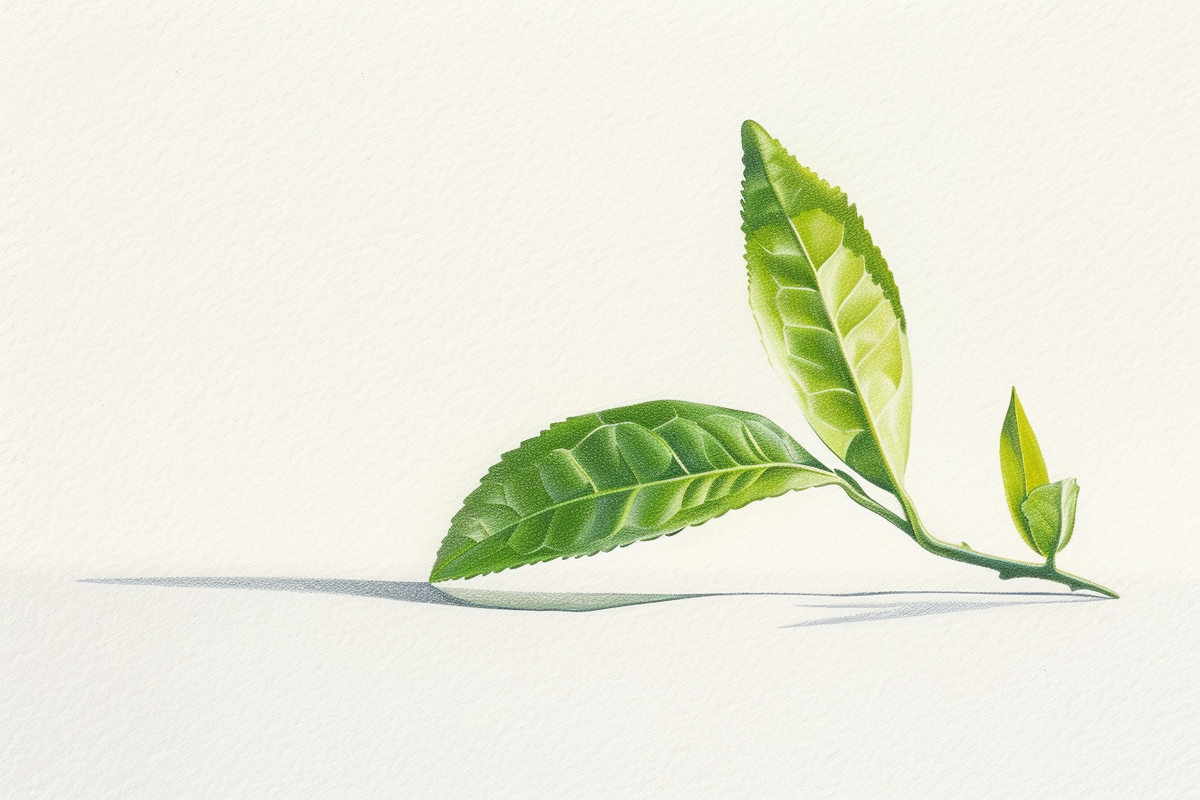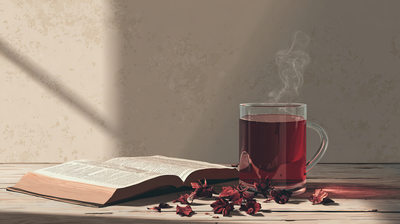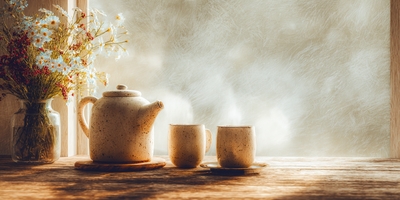How Can I Tell the Quality of Tea? Expert Tips for Spotting Superior Leaves
Inside this Article:
- Introduction
- Understanding Tea Varieties and Origins
- Examining Leaf Appearance
- A. Color: A Visual Indicator of Freshness and Quality
- B. Shape and Size: The Hallmarks of Careful Processing
- C. Recognizing Whole Leaves Versus Broken Pieces
- D. The Significance of Consistency
- Assessing Aroma and Fragrance
- The Initial Sniff: A Prelude to Quality
- Connecting Fragrance to Freshness and Quality
- Nuance and Complexity in Aroma
- Practical Tips for Aroma Assessment
- Brewing and Tasting
- Conclusion
Introduction
For countless individuals around the globe, tea is not merely a beverage; it's an experience, a ritual, and for some, a way of life. The quality of tea plays a pivotal role in this experience, profoundly influencing the flavor, aroma, and the sheer pleasure derived from each cup. High-quality tea can transform a simple tea drinking session into an exquisite sensory journey, elevating the mood, soothing the spirit, and even offering a host of health benefits ranging from antioxidant properties to stress relief.
However, discerning the quality of tea is an art form in itself. It is not just about the taste; it's about engaging all the senses to appreciate the nuances that differentiate a superior leaf from an ordinary one. This intricate dance of sensory evaluation is influenced by a myriad of factors, from the tea's origin and type to the appearance and aroma of the leaves. Understanding these factors can help tea enthusiasts, from novices to connoisseurs, navigate the vast world of tea with confidence and finesse.
Beginning this journey of exploration unveils a realm where tea is not merely consumed but cherished, where every sip delivers not just hydration but a bond with the deep traditions and cultures that have esteemed this splendid beverage for centuries. Join us as we explore expert tips for spotting superior tea leaves, ensuring that your next cup of tea is not just good but exceptional.
Understanding Tea Varieties and Origins
The journey into the heart of tea quality begins with an understanding of the tea itself. Tea, in its essence, is an infusion made from the leaves of Camellia sinensis, a plant that gives us the myriad varieties we know and love. Each type of tea—black, green, white, oolong, and pu-erh—undergoes a different process of oxidation and fermentation, leading to distinct flavors, aromas, and health benefits.
The Spectrum of Tea Varieties
Black Tea: Fully oxidized, black tea offers robust flavors and a higher caffeine content. Its quality is often judged by the richness of its flavor, the boldness of its color, and the presence of a certain brightness in the cup.
Green Tea: Less oxidized than black tea, green tea retains a green color and offers a more delicate flavor profile. High-quality green tea has a fresh, grassy aroma and a clean finish, without the bitterness that comes from over-processing or over-brewing.
White Tea: The least processed of all teas, white tea is prized for its subtlety and natural sweetness. Its quality can be discerned through the tea's pale color and the soft, fresh aroma, with notes that can range from floral to slightly fruity.
Oolong Tea: Oolong tea stands between green and black tea in terms of oxidation. Its quality is marked by a complex flavor profile that can vary from sweet and floral to dark and roasted. The best oolongs have a smooth, rich flavor that evolves with each sip.
Pu-erh Tea: This fermented tea can be either green (raw) or black (ripe), and its quality increases with age. High-quality pu-erh should have a deep, earthy aroma, a clear, rich color, and a taste that is complex but not overly musty.
The Role of Origin
The origin of tea plays a crucial role in its quality. Factors such as climate, soil, altitude, and even the specific practices of the tea estate can significantly influence the tea's character. For example, Darjeeling teas from India are renowned for their unique muscatel flavor, a direct result of the region's cool climate and high altitude. Similarly, the misty mountains of China's Fujian province produce white teas of unparalleled delicacy and refinement.
Teas from specific regions or estates can carry a reputation for excellence, much like fine wines. The combination of natural factors and human expertise in these regions results in teas that are not only unique but of consistently high quality. Recognizing the importance of origin in tea quality is akin to understanding the terroir in wine-making—it is about acknowledging that the land, the climate, and the hands that nurture the tea all contribute to the final cup's excellence.
By exploring the varieties of tea and the significance of their origins, we can begin to appreciate the diversity and richness that high-quality tea has to offer. This knowledge is the first step in becoming a discerning tea drinker, capable of recognizing and appreciating the finest leaves the world has to offer.
Examining Leaf Appearance
One of the most tangible aspects of tea quality is visible to the naked eye through the appearance of the dry leaves. The way tea leaves look can tell you a lot about the care taken during harvesting and processing, as well as the tea's overall quality. Understanding what to look for in the leaves can transform your tea selection process, ensuring you choose only the best.
A. Color: A Visual Indicator of Freshness and Quality
The color of dry tea leaves can be a significant indicator of their quality and freshness. High-quality green teas, for example, should have a vibrant green color, suggesting they were properly processed and stored to preserve their natural antioxidants and flavor. Oolong teas may vary in color from green to dark brown, indicating the level of oxidation; however, the color should still be vivid and uniform. Black teas should boast a deep, rich brown or black color, signifying a full oxidation process. Any dullness in color can be a sign of age or poor storage conditions, which can negatively affect the tea's flavor and aroma.
B. Shape and Size: The Hallmarks of Careful Processing
The shape and size of tea leaves can also offer clues about their quality. Whole leaves are generally preferred over broken pieces, as they retain more of their natural flavor and essential oils. Whole leaves that unfurl beautifully when steeped are often a sign of a high-quality tea. Uniformity in size and shape is another hallmark of a carefully processed tea, indicating that the leaves were sorted with attention to detail.
Some teas, like certain oolongs, are intentionally rolled or twisted, which is part of their traditional processing method. These should appear uniformly shaped according to their type. On the other hand, teas like silver needle white tea, comprised only of tender young tea buds, should be uniform in size and color, showcasing the meticulous selection process.
C. Recognizing Whole Leaves Versus Broken Pieces
The distinction between whole leaves and broken pieces is crucial when assessing tea quality. Whole leaves generally indicate a tea of higher quality because they have been handled less, reducing the risk of losing essential oils and flavors. Broken leaves, often found in lower-grade teas or tea bags, tend to release more tannins when steeped, leading to a more astringent and less nuanced flavor profile. While some tea types, like CTC (Crush, Tear, Curl) black teas, are intentionally broken down for a strong brew, for most premium teas, whole leaves are a sign of superior quality.
D. The Significance of Consistency
Consistency in the appearance of tea leaves is a sign of meticulous craftsmanship. A batch of tea where all the leaves are similar in color, shape, and size indicates that the tea was produced with precision and care, from the plucking of the leaves to their final processing. This uniformity ensures that each cup of tea brewed from these leaves will have a balanced and harmonious flavor.
By giving due attention to the appearance of tea leaves before making a purchase, you can significantly increase your chances of selecting a high-quality tea. The color, shape, size, and consistency of the leaves are all markers that can guide you towards teas that offer the best sensory experience, from the first aroma to the last sip.
Assessing Aroma and Fragrance
The aroma of dry tea leaves is a profound indicator of their quality, offering an olfactory preview of the flavors and experience that awaits. Before water ever touches the leaves, their fragrance can tell a story of freshness, origin, and meticulous processing. Understanding how to assess the quality of tea through its aroma allows enthusiasts to anticipate the cup's character and complexity even before brewing.
The Initial Sniff: A Prelude to Quality
The process of assessing a tea's aroma begins the moment you open a package of tea. High-quality teas will greet you with a potent and inviting fragrance that reflects their specific type. For instance, a premium green tea might emit fresh, grassy notes, while a high-quality black tea could offer a rich, malty aroma. These initial scents should be clear and distinct, signaling the tea's freshness and careful processing.
The absence of a strong aroma or the presence of any off-odors (mustiness, dampness, or staleness) can be immediate indicators of poor quality or improper storage. Tea is hygroscopic, meaning it easily absorbs moisture and odors from its environment, which can adversely affect its taste and aroma.
Connecting Fragrance to Freshness and Quality
The fragrance of tea leaves is closely tied to their freshness. Freshly harvested and properly processed teas will have a more vibrant aroma, indicative of the essential oils and aromatic compounds still intact within the leaves. These compounds, responsible for tea's flavor and health benefits, degrade over time or when exposed to adverse conditions. Thus, a potent fragrance in dry leaves is a good sign of the tea's recent harvest and quality preservation.
Nuance and Complexity in Aroma
Beyond the initial assessment of freshness, the nuances and complexity of the tea's aroma can further hint at its quality. High-quality teas often have layered scents that may evoke floral, fruity, earthy, or woody notes, depending on the variety. These subtleties in aroma are the result of the tea plant's terroir, the specific cultivar, and the precision of the tea-making process.
For example, a high-grade oolong tea might have a complex aroma that hints at both floral and creamy notes, revealing the skillful oxidation and roasting it underwent. Similarly, a fine pu-erh tea will have a deep, earthy aroma, indicating a well-managed fermentation process. The ability to detect these intricate aromas and appreciate their balance is a hallmark of quality.
Practical Tips for Aroma Assessment
+ Use a sealed container: Open the tea container and take a gentle whiff to avoid overwhelming your sense of smell.+ Warm the leaves slightly: If possible, place a small amount of tea leaves in a warm, dry vessel. The gentle heat can help release the leaves' aromatic oils, making the fragrance more pronounced.
+ Trust your instincts: While personal preferences play a role, high-quality teas generally have a fragrance that is appealing and intriguing, encouraging you to explore further through brewing.
Assessing the aroma of tea leaves before brewing is an essential skill for any tea lover. It not only enhances the anticipation of the brewing process but also ensures that you're starting with a tea of the highest quality, promising a rewarding and sensory-rich tea experience.
Brewing and Tasting
The act of brewing tea is both an art and a science, serving as the final, crucial step in unveiling the true quality of tea leaves. Proper brewing techniques can magnify the inherent qualities of tea, offering a clear window into its craftsmanship and origin. Conversely, improper brewing can mask or distort these qualities, preventing the full spectrum of flavors and aromas from being experienced. Here’s how to ensure your brewing process highlights the tea's best features and what tasting notes to look for in a quality brew.
The Importance of Proper Brewing
The right brewing conditions—water temperature, quantity of tea, and steeping time—are pivotal in extracting the optimal balance of flavors from the leaves. Each type of tea requires a specific approach to brewing:
+ Green tea often thrives with cooler water (around 175°F to 185°F) and shorter steeping times to avoid extracting excessive bitterness.+ Black tea usually benefits from hotter water (near boiling, around 200°F to 212°F) and can be steeped longer to develop its full flavor profile.
+ Oolong tea has a wide range of oxidation levels and may require varied temperatures and times, encouraging experimentation.
+ White tea prefers gentle treatment with lower temperatures and varying steep times based on the leaf's delicacy.
+ Pu-erh tea, especially aged varieties, can withstand and even require boiling water, with steeping times adjusted according to personal taste preference.
Tasting Notes and Quality Indicators
Once properly brewed, a high-quality tea will reveal itself through several key tasting notes:
+ Clarity in Flavor: Quality tea should have a clear and distinct flavor profile, whether it's the grassy freshness of green tea, the floral delicacy of white tea, the rich maltiness of black tea, or the complex layers of oolong. The flavors should be clean and pronounced, not muddled or overly bitter.+ Depth and Complexity: High-quality teas often have a depth of flavor that evolves as you sip. Look for layers of taste that unfold in your mouth, revealing different notes and sensations.
+ Aftertaste: The aftertaste, or finish, of a tea is a strong indicator of its quality. Premium teas leave a pleasant, lingering aftertaste that can change and develop in the mouth long after the tea has been swallowed.
+ Balance of Attributes: While some bitterness and astringency can be characteristic and desired in certain teas, they should be well-balanced with the tea's inherent sweetness or umami qualities. Overwhelming bitterness or astringency is often a sign of over-steeping or lower-quality leaves.
Practical Brewing Tips
+ Use fresh, filtered water: The quality of water can greatly affect the tea's flavor. Start with fresh, cold, filtered water for the best results.+ Be mindful of steeping times: Start with the recommended steeping times but adjust according to your taste preferences and the specific tea's characteristics.
+ Experiment and take notes: Keeping a tea journal of brewing conditions and outcomes can help you refine your technique and understand what works best for each type of tea.
Mastering the nuances of brewing and tasting tea opens up a realm of sensory exploration and appreciation. By focusing on the clarity, depth, and balance of flavors, you can discern the quality of tea with confidence, ensuring every cup is a testament to the leaves' origin, processing, and your brewing skill.
Conclusion
Identifying high-quality tea is an enriching skill that enhances every aspect of the tea drinking experience. By understanding the nuances of tea varieties and origins, examining the appearance of the leaves, assessing their aroma and fragrance, and mastering the art of brewing and tasting, you can unlock the full potential of this ancient beverage. These essential aspects not only guide you in selecting the finest teas but also deepen your appreciation for the craft behind each cup.
Embracing these insights can transform your approach to tea, moving it from a routine beverage choice to a mindful exploration of flavors, cultures, and traditions. High-quality tea offers more than just a pleasing taste; it provides a moment of tranquility, a burst of invigoration, and a connection to a global community of tea lovers and producers. It's a journey that can make the familiar act of drinking tea a source of continuous discovery and delight.
Call to Action
We encourage you to share your own experiences or any additional tips you've discovered for spotting high-quality tea. Your journey, experiments, and insights can inspire and inform others, contributing to a richer, more connected tea community.
Furthermore, we recommend experimenting with various teas from trusted sources as a practical application of the tips discussed. Whether it's exploring different types of tea, experimenting with brewing techniques, or comparing the nuances of teas from various regions, each step is an opportunity to refine your palate and enhance your understanding of quality.
By actively seeking out and appreciating high-quality teas, you not only elevate your own tea experience but also support the artisans and farmers dedicated to producing exceptional teas around the world. So, embark on this journey with curiosity and an open mind, and let the world of high-quality tea unfold before you.






